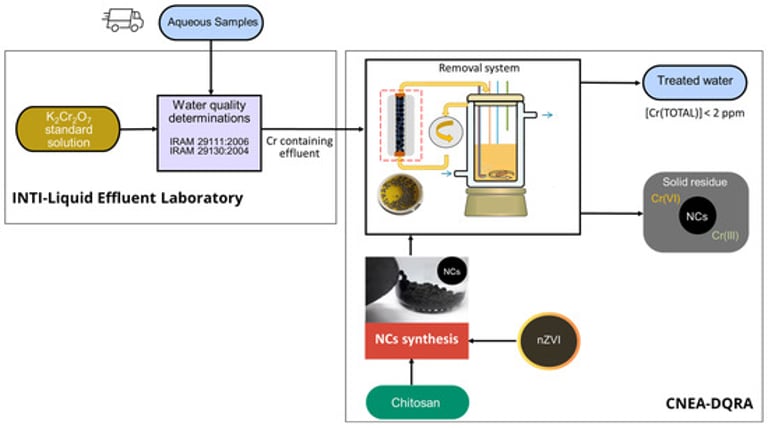Chitosan-Based Materials Revolutionize Cadmium Clean-Up in Water: Study Reveals Breakthrough in Environmental Management
September 30, 2024
A recent study underscores the effectiveness of chitosan-based materials in remediating cadmium-contaminated water, which has significant implications for environmental management.
The research utilized chitosan–magnetite (ChM) and chitosan–ferrous oxide (ChF) xerogel beads to efficiently remove cadmium ions from aqueous solutions at a neutral pH of 7.0.
The article highlights the pressing issue of water contamination by heavy metals, particularly cadmium, and discusses the potential of chitosan-based xerogel beads for its removal.
The maximum cadmium uptake capacities were determined to be 36.97 mg Cd/g for ChM and 28.60 mg Cd/g for ChF, showcasing their efficiency.
Adsorption isotherm studies revealed an S-type isotherm, indicating the formation of a second layer of cadmium ions at higher concentrations.
Kinetic studies indicated that cadmium adsorption was best described by the Elovich model, suggesting a heterogeneous surface on the adsorbents.
Characterization methods confirmed the presence of magnetite in ChM and FeO in ChF, with both composites demonstrating effective cadmium removal properties.
The study also explored various combinations of medium and high molecular weight chitosan with carboxymethylcellulose (CMC), resulting in enhanced structural stability and reactivity of the nanocomposites.
Furthermore, the research suggests that immobilizing zero-valent iron nanoparticles (nZVI) in chitosan can provide a cost-effective solution for wastewater treatment, reducing external waste management costs.
This approach not only meets water quality regulations for hexavalent chromium (Cr(VI)) discharge but also offers a feasible method for laboratories handling hazardous waste.
With regulatory limits for cadmium in drinking water set at 0.005 mg/L in Mexico and 0.003 mg/L by the World Health Organization, effective remediation strategies are crucial.
Cadmium ions, which are primarily derived from industrial activities such as cement production and battery manufacturing, pose significant health risks.
Summary based on 2 sources